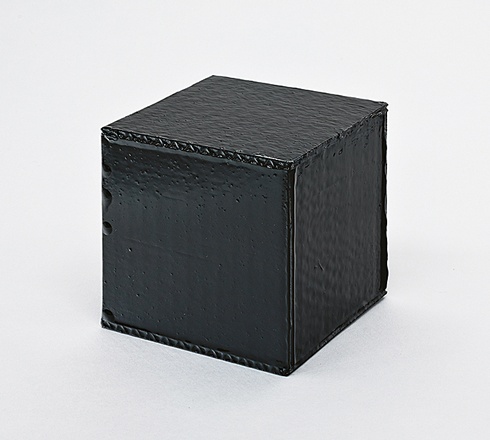Heimo Zobernig
ohne Titel (2025)
This cube, like any cube, was preceded by another. The shape is familiar; there’s no need to walk around it to take it in, which is why it was already of interest to the Minimalists: an object that’s always the identical yet never the same. The abstract square suggested the end of painting; the cube implied a fresh start in sculpture.Variation and repetition are central motifs in the art of Heimo Zobernig, who already made a small black cube as an edition for TEXTE ZUR KUNST back in 2015. That cube wasn’t the first one, either; it was a wieldy variant of the room-size cube that has been part of the artist’s vocabulary since the 1990s. Here, repeating the repetition is a creative stratagem. The cube’s pitch-black color brings to mind torments and disasters (from tarring and feathering to an oil leak). Still, it’s actually a pleasurable sensual gesture: once you’ve cast the die as successfully as Zobernig has, you can’t not whip it out again and again. Whereas Minimalism’s cubes are characterized by industrially manufactured surfaces and high-grade materials, Zobernig’s black cube disavows such pathos. The varnished cardboard box signals its value not through the material but through the amount of work that goes into making it look as exposed and uneven as a rusty steel cube. Though just because it has already been different and now it’s different yet again, it’s not the same thing: this cube has more shine than its TZK predecessor, more brilliance, and more reflection in which the beholder can contemplate their own likeness.

